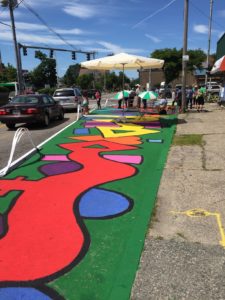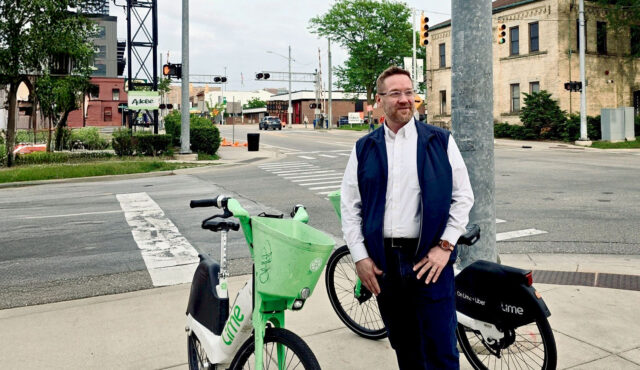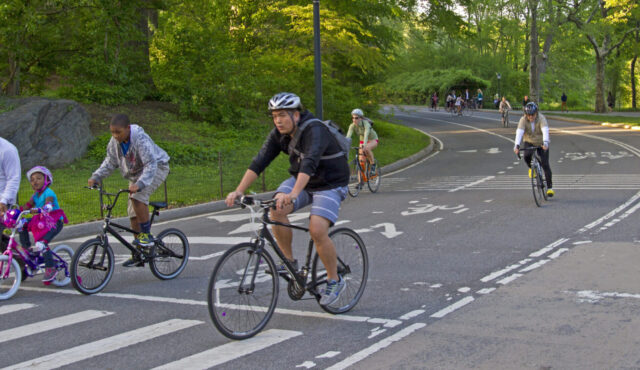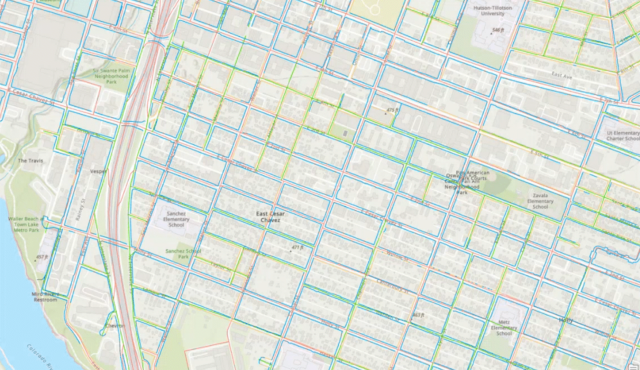Broad Street is the most dangerous street for people who walk and bike in Providence, RI. Between 2009 and 2015, 82 people walking and biking were in vehicle-involved crashes on Broad Street. And yet, in a community where one in five residents do not own a car, and 40% depend on walking, biking, or transit, the design of the street is focused on motor vehicles. Born out of a grassroots community initiative to link together several Providence neighborhoods with high-quality walking, biking, and transit connections, Providence’s Department of Planning and Development launched the City Walk project to transform Broad Street into a safe, multimodal corridor.
For one weekend, on three blocks of Broad Street, Toole Design Group staff and our project partners Street Plans Collective, McMahon Associates, and Horsley Witten Group showed residents, visitors and city leaders what a more balanced street design could look like for Broad Street. Using input from an extensive community outreach process, Toole Design Group designed a temporary streetscape for three blocks and collaborated with local businesses and stakeholders to host a weekend-long outreach event.

The temporary streetscape included removal of a center-turn lane, a pop-up two-way protected bike lane, and curb extensions at intersections to visually narrow the road and shorten crossing distances. In addition, our team reclaimed 6,000 square feet of pavement to create several large-scale pedestrian plazas where people could gather and sit. We partnered with local artists to add color and culture to the plazas, providing both a community connection and helping the changes stand out to passers-by. We also invited local vendors to offer their goods and services along the streetscape, including a very popular ice cream cart for a warm June weekend.
In a neighborhood with few painted bike lanes – let alone two-way separated bikeways – we used a high-quality, temporary demonstration project to introduce project concepts and build community support. By demonstrating a proposed design concept in real time, we were able to help the community experience that, on paper, felt quite foreign. The community input that we gathered during the event expressed overwhelming support for a reconfigured Broad Street, and spot data collected throughout the demonstration project supported many of the overall safety goals of the project. In fact, the median and average speeds along the corridor during the demonstration were under 25 miles per hour.
Equipped with lessons learned from the demonstration, we’re working with the project team and Providence Planning are refining concepts and completing plans for permanent changes to Broad Street, to be implemented in 2019.


